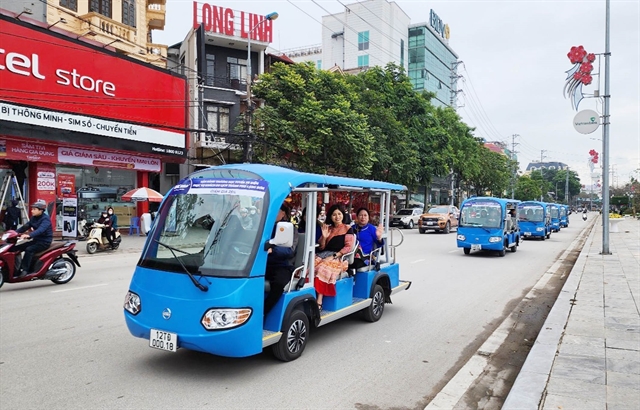 Society
Society

 |
| Electric vehicles transport tourists in the northern province of Lạng Sơn. — VNA/VNS Photo |
HÀ NỘI — Việt Nam’s roadmap for transitioning to electric vehicles (EVs) and decarbonising the transport sector should focus on five key pillars, including EV production, stimulating consumer demand, developing charging infrastructure, ensuring electricity supply, and training a highly skilled workforce, according to a report issued by the World Bank on November 22.
The report, entitled “Vietnam: Recommendations to the National Roadmap and Action Plan for the Electric-Mobility Transition”, envisions that half of urban vehicles in Việt Nam, along with all buses and taxis, will be powered by electricity by 2030.
By 2050, the goal is to completely shift all road transportation to electric or green energy. This transition is projected to reduce CO2 emissions by 5.3 million tonnes, equivalent to 8 per cent of Việt Nam’s emission reduction target by 2030, and by 226 million tonnes, or 60 per cent of the target, by 2050.
Two-wheeled vehicles, the primary mode of transportation for most Vietnamese, are expected to spearhead the transition to EVs by 2035. To accelerate this shift, the report recommends a comprehensive set of policies, including financial support for consumers, refining safety standards and inspection processes, encouraging high-performance electric motorbike production, and gradually phasing out gasoline-powered motorbikes. With these measures in place, the market share of electric two-wheelers could surge from the current 12 per cent to an impressive 75 per cent by 2035.
Post-2035, personal cars are projected to dominate Việt Nam’s transportation landscape. With a robust charging infrastructure, electric cars could become the preferred choice for first-time buyers. To meet the targets, EVs are expected to account for 93 per cent of car sales between 2036 and 2050.
The transition to EVs is particularly crucial for public and commercial transport. Although buses and trucks account for only 2 per cent of total registered vehicles, they are responsible for up to 65 per cent of emissions. To promote the adoption of electric buses, the report calls for robust policies to boost passenger numbers, update technical standards, and ensure financial viability.
To meet the charging demand by 2035, Việt Nam’s power sector will need to increase electricity production by 5 per cent, with grid capacity expanding by 4 per cent. By 2050, these figures are projected to rise to 30 per cent and 15 per cent, respectively, to achieve EV development goals. To meet these targets, Việt Nam will require an additional US$9 billion by 2030 and $14 billion annually from 2031 to 2050, on top of the funding outlined in the National Power Development Plan for 2021–2030. — VNS